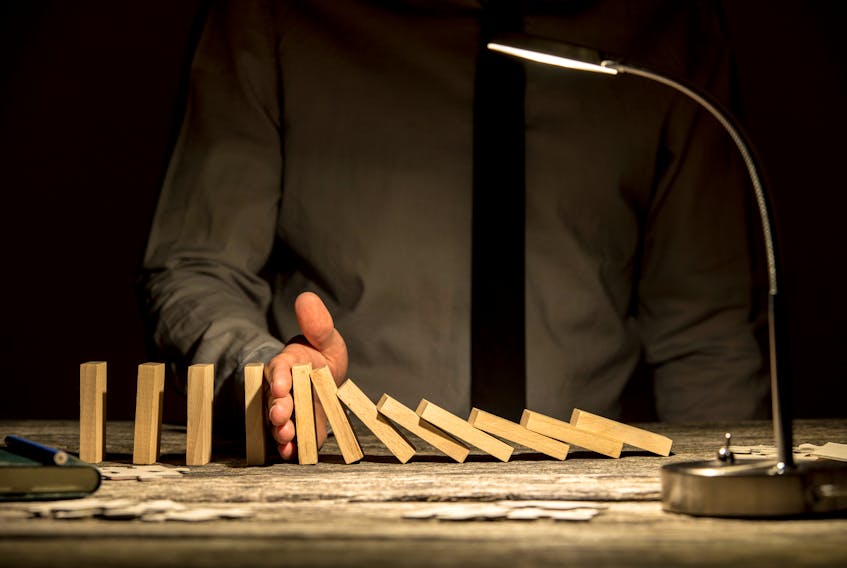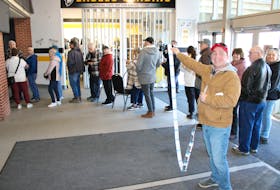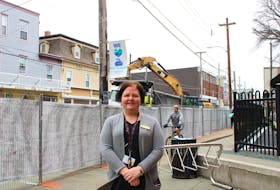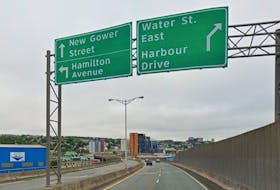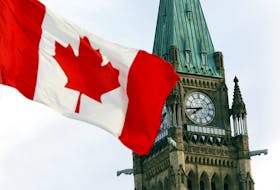For all our individuality and cherished thoughts of free will, we’re actually quite calculable.
And so is viral spread.
With nearly a million Nova Scotians trying to plan what to do with their lives in the months ahead, The Chronicle Herald went to a mathematician.

Ryan Lukeman, a professor at St. Francis Xavier University, ran this province’s demographics and the known attributes of Covid-19 through the SEIR (Susceptible, Exposed, Infected, Recovered) model, used by mathematicians and epidemiologists to predict viral spread. Into that equation he also added the known characteristics of Covid-19.
We then took his findings to another mathematician who specializes in viral spread, infectious disease modelling mathematician Robert Smith? at the University of Ottawa, and University of Toronto epidemiologist Dr. Ashleigh Tuite, for review.
“It looks reasonable and not dissimilar to what I’ve been seeing elsewhere,” Smith?, who added a question mark to his last name years ago to differentiate it from the lead singer of The Cure, said of Lukeman’s findings.

There remain unanswered variables in Covid-19's behaviour, so the SEIR results need to be taken cautiously. However, they paint in stark relief the consequence of not adhering to the physical distancing demands of our public health officials and Premier Stephen McNeil.
According to the SEIR model, without social distancing interventions Covid-19 would peak in Nova Scotia in mid-August and nearly 15,000 people would die.
“I think you should add the caveat that this is a worst-case scenario where (you do) nothing,” said Tuite, who specialized in infectious disease modelling. “Which we know is not going to happen.”
Understanding the SEIR equation requires a bit of a math lesson for most of us.
First, know that the R0 of a virus represents the average number of people the average infected person passes the virus on to.
The R0 estimates for Covid-19 based on its spread in China range from 1.4 to 3.9.
The Chinese Centre for Disease Control broke down mortality based on 44,672 confirmed cases in that country along demographic lines – with rates of death ranging from 14.8 per cent of those over 80 years old who became infected to zero among those under nine years old.
“I think the Chinese CDC data is the best we have right now,” said Tuite.
“We have different health care systems so it's hard to say with any degree of certainty. Other countries having different experiences with mortality, some of that relates to an overburdened health care system. The case mortality is higher in Italy now but they have an older population and also don’t have room in (intensive care unit) beds.”
Lukeman modelled the assumption that the average infected individual passes the disease to 2.1 people (which Tuite says is a reasonable number if we didn’t take social distancing measures) and ran it through our demographic numbers from Statistics Canada. Distancing can reduce that number.
In comes Tuite with an additional cautionary note.
Changing seasons
“Another unknown is the role of seasonality,” said Tuite.
“The flu wanes in the summer and re-imerges in colder weather. If (COVID-19) is the same, it is possible transmission will attenuate during summer months, which means a bit of a reprieve, but then it comes back in the fall with cooler weather. That’s an unknown but a lot are hoping that it’s the case.”
If so, the now famous graph of a curve we’re tasked with flattening looks like two hills rather than one mountain. The last hill stretches well into the fall and will raise significant questions for us, our public health officials and the government about how long to maintain social distancing and what we can afford.
The SEIR model Lukeman ran for Nova Scotia looks high when you consider that in Wuhan, China, where the virus started in a market selling wild animal parts, there had been 3,248 deaths as of Friday morning. In that city of 11 million people the peak of the virus’s first wave has passed.
China altered the only part of the equation over which any of us have control – it lowered the rate at which the virus was passed on by drastically cutting social interaction.
China's measures

On Jan. 23 China cut all transport into and out of Wuhan. The residential lock-down would, according to a New York Times analysis, eventually spread to include about 760 million people. Security guards were placed outside many buildings to prevent people from exiting and the state employed the extensive systems it normally uses for monitoring its own citizens to enforce the lockdown.
The latter infrastructure, which includes extensive video surveillance equipped with facial recognition and monitoring of communications, we don’t have.
In the last century’s wars it was our young men who paid disproportionately for the civil liberties that we cherish.
In this pandemic it is the old and those with compromised immune systems who pay in a scenario where we don't voluntarily maintain social distancing.
“If everyone didn’t go out, then (the pandemic lasts) two weeks,” said Smith?.
“But we can’t do that for good reason.”
So the big question is how much the measures we have taken so far affected the transmission rate here?
“We have cut it way more than half, maybe down to 30 per cent,” estimated Smith?.
“That’s great, it will bring down the number of contacts and it will bring down the peak (of infected individuals), but will widen the tail.”
Or tails, if we get that reprieve during the summer.
All these efforts won’t ultimately drastically affect how many of us get it.
“It’s not in a disease’s best interest for us all to die of it,” said Smith?.
Mathematicians offer the coldest forms of comfort.
Epidemiologists are a bit more mindful of bedside manner when cajoling fearful societies toward self distancing.
“You can be fatalistic and say at the end of the day the number of people that will get it is still a large number,” said Tuite.
“The counter to that is, ‘Yes, but it will be a much more manageable spread of disease and we won’t have people who can’t access care or have the equipment that they need.’”
There’s hope of a vaccine in another year or two.
Beyond that there is hope for herd immunity.
Viruses with an R0 of about two have difficulty moving through a population once half its people have survived it and become immune.
That’s assuming, however, that beating COVID-19 prevents you from getting it again.
“We don’t know that,” said Tuite.
“The assumption now is that there is at least short term immunity, but how durable it is we don’t know. For most coronaviruses (the family of COVID-19) it is not a super durable (immunity) response, maybe a couple years, but it’s unknown at this point.”

